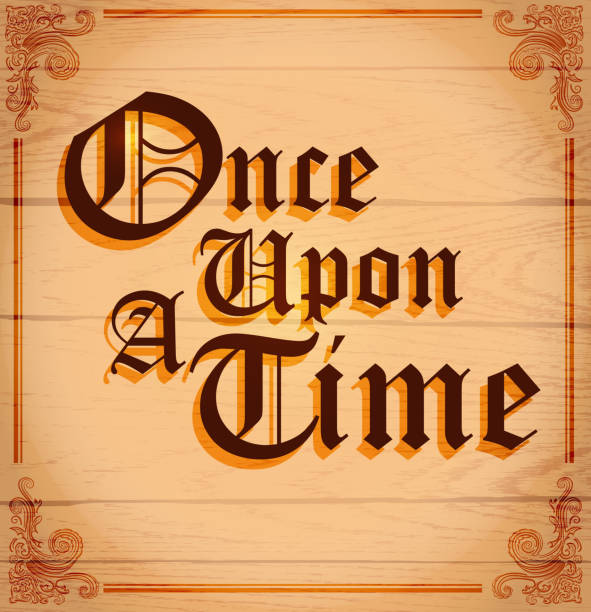 Lately, I’ve been seeing more and more posts on social media asking for testing suggestions for students who exhibit subtle language-based difficulties. Many of these children are typically referred for initial assessments or reassessments as part of advocate/attorney involved cases, while others are being assessed due to the parental insistence that something “is not quite right” with their language and literacy abilities, even in the presence of “good grades.” Continue reading Comprehensive Assessment of Elementary Aged Children with Subtle Language and Literacy Deficits
Lately, I’ve been seeing more and more posts on social media asking for testing suggestions for students who exhibit subtle language-based difficulties. Many of these children are typically referred for initial assessments or reassessments as part of advocate/attorney involved cases, while others are being assessed due to the parental insistence that something “is not quite right” with their language and literacy abilities, even in the presence of “good grades.” Continue reading Comprehensive Assessment of Elementary Aged Children with Subtle Language and Literacy Deficits
Category: Narratives
Speech, Language, and Literacy Fun with Helen Lester’s Picture Books
 Picture books are absolutely wonderful for both assessment and treatment purposes! They are terrific as narrative elicitation aids for children of various ages, ranging from pre-K through fourth grade. They are amazing treatment aids for addressing a variety of speech, language, and literacy goals that extend far beyond narrative production. Continue reading Speech, Language, and Literacy Fun with Helen Lester’s Picture Books
Picture books are absolutely wonderful for both assessment and treatment purposes! They are terrific as narrative elicitation aids for children of various ages, ranging from pre-K through fourth grade. They are amazing treatment aids for addressing a variety of speech, language, and literacy goals that extend far beyond narrative production. Continue reading Speech, Language, and Literacy Fun with Helen Lester’s Picture Books
Identifying Word Finding Deficits in Narrative Retelling of School-Aged Children
 In the past, I have written several posts on the topic of word finding difficulties (HERE and HERE) as well as narrative assessments (HERE and HERE) of school-aged children. Today I am combining these posts together by offering suggestions on how SLPs can identify word finding difficulties in narrative samples of school-aged children. Continue reading Identifying Word Finding Deficits in Narrative Retelling of School-Aged Children
In the past, I have written several posts on the topic of word finding difficulties (HERE and HERE) as well as narrative assessments (HERE and HERE) of school-aged children. Today I am combining these posts together by offering suggestions on how SLPs can identify word finding difficulties in narrative samples of school-aged children. Continue reading Identifying Word Finding Deficits in Narrative Retelling of School-Aged Children
Analyzing Narratives of School-Aged Children

As mentioned previously, for elicitation purposes, I frequently use the books recommended by the SALT Software website, which include: ‘Frog Where Are You?’ by Mercer Mayer, ‘Pookins Gets Her Way‘ and ‘A Porcupine Named Fluffy‘ by Helen Lester, as well as ‘Dr. DeSoto‘ by William Steig. Continue reading Analyzing Narratives of School-Aged Children
The Importance of Narrative Assessments in Speech Language Pathology (Revised)
 As SLPs we routinely administer a variety of testing batteries in order to assess our students’ speech-language abilities. Grammar, syntax, vocabulary, and sentence formulation get frequent and thorough attention. But how about narrative production? Does it get its fair share of attention when the clinicians are looking to determine the extent of the child’s language deficits? I was so curious about what the clinicians across the country were doing that in 2013, I created a survey and posted a link to it in several SLP-related FB groups. I wanted to find out how many SLPs were performing narrative assessments, in which settings, and with which populations. From those who were performing these assessments, I wanted to know what type of assessments were they using and how they were recording and documenting their findings. Since the purpose of this survey was non-research based (I wasn’t planning on submitting a research manuscript with my findings), I only analyzed the first 100 responses (the rest were very similar in nature) which came my way, in order to get the general flavor of current trends among clinicians, when it came to narrative assessments. Here’s a brief overview of my [limited] findings. Continue reading The Importance of Narrative Assessments in Speech Language Pathology (Revised)
As SLPs we routinely administer a variety of testing batteries in order to assess our students’ speech-language abilities. Grammar, syntax, vocabulary, and sentence formulation get frequent and thorough attention. But how about narrative production? Does it get its fair share of attention when the clinicians are looking to determine the extent of the child’s language deficits? I was so curious about what the clinicians across the country were doing that in 2013, I created a survey and posted a link to it in several SLP-related FB groups. I wanted to find out how many SLPs were performing narrative assessments, in which settings, and with which populations. From those who were performing these assessments, I wanted to know what type of assessments were they using and how they were recording and documenting their findings. Since the purpose of this survey was non-research based (I wasn’t planning on submitting a research manuscript with my findings), I only analyzed the first 100 responses (the rest were very similar in nature) which came my way, in order to get the general flavor of current trends among clinicians, when it came to narrative assessments. Here’s a brief overview of my [limited] findings. Continue reading The Importance of Narrative Assessments in Speech Language Pathology (Revised)
What do Narratives and Pediatric Psychiatric Impairments Have in Common?
 High comorbidity between language and psychiatric disorders has been well documented (Beitchman, Cohen, Konstantaras, & Tannock, 1996; Cohen, Barwick, Horodezky, Vallence, & Im, 1998; Toppelberg & Shapiro, 2000). However, a lesser known fact is that there’s also a significant under-diagnosis of language impairments in children with psychiatric disorders. Continue reading What do Narratives and Pediatric Psychiatric Impairments Have in Common?
High comorbidity between language and psychiatric disorders has been well documented (Beitchman, Cohen, Konstantaras, & Tannock, 1996; Cohen, Barwick, Horodezky, Vallence, & Im, 1998; Toppelberg & Shapiro, 2000). However, a lesser known fact is that there’s also a significant under-diagnosis of language impairments in children with psychiatric disorders. Continue reading What do Narratives and Pediatric Psychiatric Impairments Have in Common?
Creating A Learning Rich Environment for Language Delayed Preschoolers
 Today I’m excited to introduce a new product: “Creating A Learning Rich Environment for Language Delayed Preschoolers“. This 40 page presentation provides suggestions to parents regarding how to facilitate further language development in language delayed/impaired preschoolers at home in conjunction with existing outpatient, school, or private practice based speech language services. It details implementation strategies as well as lists useful materials, books, and websites of interest.
Today I’m excited to introduce a new product: “Creating A Learning Rich Environment for Language Delayed Preschoolers“. This 40 page presentation provides suggestions to parents regarding how to facilitate further language development in language delayed/impaired preschoolers at home in conjunction with existing outpatient, school, or private practice based speech language services. It details implementation strategies as well as lists useful materials, books, and websites of interest.
It is intended to be of interest to both parents and speech language professionals (especially clinical fellows and graduates speech pathology students or any other SLPs switching populations) and not just during the summer months. SLPs can provide it to the parents of their cleints instead of creating their own materials. This will not only save a significant amount of time but also provide a concrete step-by-step outline which explains to the parents how to engage children in particular activities from bedtime book reading to story formulation with magnetic puzzles.
Product Content:
- The importance of daily routines
- The importance of following the child’s lead
- Strategies for expanding the child’s language
- Self-Talk
- Parallel Talk
- Expansions
- Extensions
- Questioning
- Use of Praise
- A Word About Rewards
- How to Begin
- How to Arrange the environment
- Who is directing the show?
- Strategies for facilitating attention
- Providing Reinforcement
- Core vocabulary for listening and expression
- A word on teaching vocabulary order
- Teaching Basic Concepts
- Let’s Sing and Dance
- Popular toys for young language impaired preschoolers (3-4 years old)
- Playsets
- The Versatility of Bingo (older preschoolers)
- Books, Books, Books
- Book reading can be an art form
- Using Specific Story Prompts
- Focus on Story Characters and Setting
- Story Sequencing
- More Complex Book Interactions
- Teaching vocabulary of feelings and emotions
- Select favorite authors perfect for Pre-K
- Finding Intervention Materials Online The Easy Way
- Free Arts and Crafts Activities Anyone?
- Helpful Resources
Are you a caregiver, an SLP or a related professional? DOES THIS SOUND LIKE SOMETHING YOU CAN USE? if so you can find it HERE in my online store.
Useful Smart Speech Therapy Resources:
- Assessment Checklist for Preschool Aged Children
- Creating Functional Therapy Plan
- Selecting Clinical Materials for Pediatric Therapy
- Language Processing Checklist for Preschool Children
- Social Pragmatic Deficits Checklist for Preschool Children
- Recognizing the Warning Signs of Social Emotional Difficulties in Language Impaired Toddlers and Preschoolers
- Executive Function Impairments in At-Risk Pediatric Populations
References:
Heath, S. B (1982) What no bedtime story means: Narrative skills at home and school. Language in Society, vol. 11 pp. 49-76.
Useful Websites:
http://www.beyondplay.com
http://www.superdairyboy.com/Toys/magnetic_playsets.html
http://www.educationaltoysplanet.com/
http://www.melissaanddoug.com/shop.phtml
http://www.dltk-cards.com/bingo/
http://bogglesworldesl.com/
http://www.childrensbooksforever.com/index.html
Components of Comprehensive Dyslexia Testing: Part I- Introduction and Language Testing
 With the passing of dyslexia laws in the state of New Jersey in 2014, there has been an increased focus on reading disabilities and dyslexia particularly in the area of effective assessment and remediation. More and more parents and health related professionals are looking to understand the components of effective dyslexia testing and who is qualified to perform it. So I decided to write a multi-part series regarding the components of comprehensive dyslexia testing in order to assist parents and professionals to better understand the steps of the testing process.
With the passing of dyslexia laws in the state of New Jersey in 2014, there has been an increased focus on reading disabilities and dyslexia particularly in the area of effective assessment and remediation. More and more parents and health related professionals are looking to understand the components of effective dyslexia testing and who is qualified to perform it. So I decided to write a multi-part series regarding the components of comprehensive dyslexia testing in order to assist parents and professionals to better understand the steps of the testing process.
In this particular post I would like to accomplish two things: dispel several common myths regarding dyslexia testing as well as discuss the first step of SLP based testing which is a language assessment.
Myth 1: Dyslexia can be diagnosed based on a single test!
DYSLEXIA CANNOT BE CONFIRMED BY THE ADMINISTRATION OF ONE SPECIFIC TEST. A comprehensive battery of tests from multiple professionals including neuropsychologists, psychologists, learning specialists, speech-language pathologists and even occupational therapists needs to actually be administered in order to confirm the presence of reading based disabilities.
Myth 2: A doctor can diagnose dyslexia!
A doctor does not have adequate training to diagnose learning disabilities, the same way as a doctor cannot diagnose speech and language problems. Both lie squarely outside of their scope of practice! A doctor can listen to parental concerns and suggest an appropriate plan of action (recommend relevant assessments) but they couldn’t possibly diagnose dyslexia which is made on the basis of team assessments.
Myth 3: Speech Pathologists cannot perform dyslexia testing!
SPEECH-LANGUAGE PATHOLOGISTS TRAINED IN IDENTIFICATION OF READING AND WRITING DISORDERS ARE FULLY QUALIFIED TO PERFORM SIGNIFICANT PORTIONS OF DYSLEXIA BATTERY.
So what are the dyslexia battery components?
Prior to initiating an actual face to face assessment with the child, we need to take down a thorough case history (example HERE) in order to determine any pre-existing risk factors. Dyslexia risk factors may include (but are not limited to):
- History of language and learning difficulties in the family
- History of language delay (impaired memory, attention, grammar, syntax, sentence repetition ability, etc) as well as
- History of impaired phonological awareness skills (difficulty remembering children’s songs, recognizing and making rhymes, confusing words that sound alike, etc).
After that, we need to perform language testing to determine whether the child presents with any deficits in that area. Please note that while children with language impairments are at significant risk for dyslexia not all children with dyslexia present with language impairments. In other words, the child may be cleared by language testing but still present with significant reading disability, which is why comprehensive language testing is only the first step in the dyslexia assessment battery.
 LANGUAGE TESTING
LANGUAGE TESTING
Here we are looking to assess the child’s listening comprehension. processing skills, and verbal expression in the form of conversational and narrative competencies. Oral language is the prerequisite to reading and writing. So a single vocabulary test, a grammar completion task, or even a sentence formulation activity is simply not going to count as a part of a comprehensive assessment.
In children without obvious linguistic deficits such as limited vocabulary, difficulty following directions, or grammatical/syntactic errors (which of course you’ll need to test) I like to use the following tasks, which are sensitive to language impairment:
Listening Comprehension (with a verbal response component)
- Here it is important to assess the student’s ability to listen to short passages and answer a variety of story related questions vs. passively point at 1 of 4 pictures depicting a particular sentence structure (e.g., Point to the picture which shows: “The duck was following the girl”). I personally like to use the Listening Comprehension Tests for this task but any number of subtests from other tests have similar components.
Semantic Flexibility
- Here it is important to assess the student’s vocabulary ability via manipulation of words to create synonyms, antonyms, multiple meaning words, definitions, etc. For this task I like to use the WORD Tests (3-Elementary and 2-Adolescent).
Narrative Production:
- A hugely important part of a language assessment is an informal spontaneously produced narrative sample, which summarizes a book or a movie. Just one few minute narrative sample can yield information on the following:
- Sequencing Ability
- Working Memory
- Grammar
- Vocabulary
- Pragmatics and perspective taking
- Story grammar (Stein & Glenn, 1979)
Usually I don’t like to use any standardized testing for assessment of this skill but use the parameters from the materials I created myself based on existing narrative research (click HERE).
Social Pragmatic Language
- Given my line of work (school in an outpatient psychiatric setting), no testing is complete without some for of social pragmatic language assessment in order to determine whether the student presents with hidden social skill deficits. It is important to note that I’ve seen time and time again students acing the general language testing only to bomb on the social pragmatic tasks which is why this should be a mandatory part of every language test in my eyes. Here, a variety of choices exists. For quick results I typically tends to use the Social Language Development Tests as well as portions of the Social Thinking Dynamic Assessment Protocol®.
Not sure what type of linguistic deficits your student is displaying? Grab a relevant checklist and ask the student’s teacher and parent fill it out (click HERE to see types of available checklists)
So there you have it! The first installment on comprehensive dyslexia testing is complete.
READ part II which discusses components of Phonological Awareness and Word Fluency testing HERE.
Read part III of this series which discusses components of Reading Fluency and Reading Comprehension testing HERE.